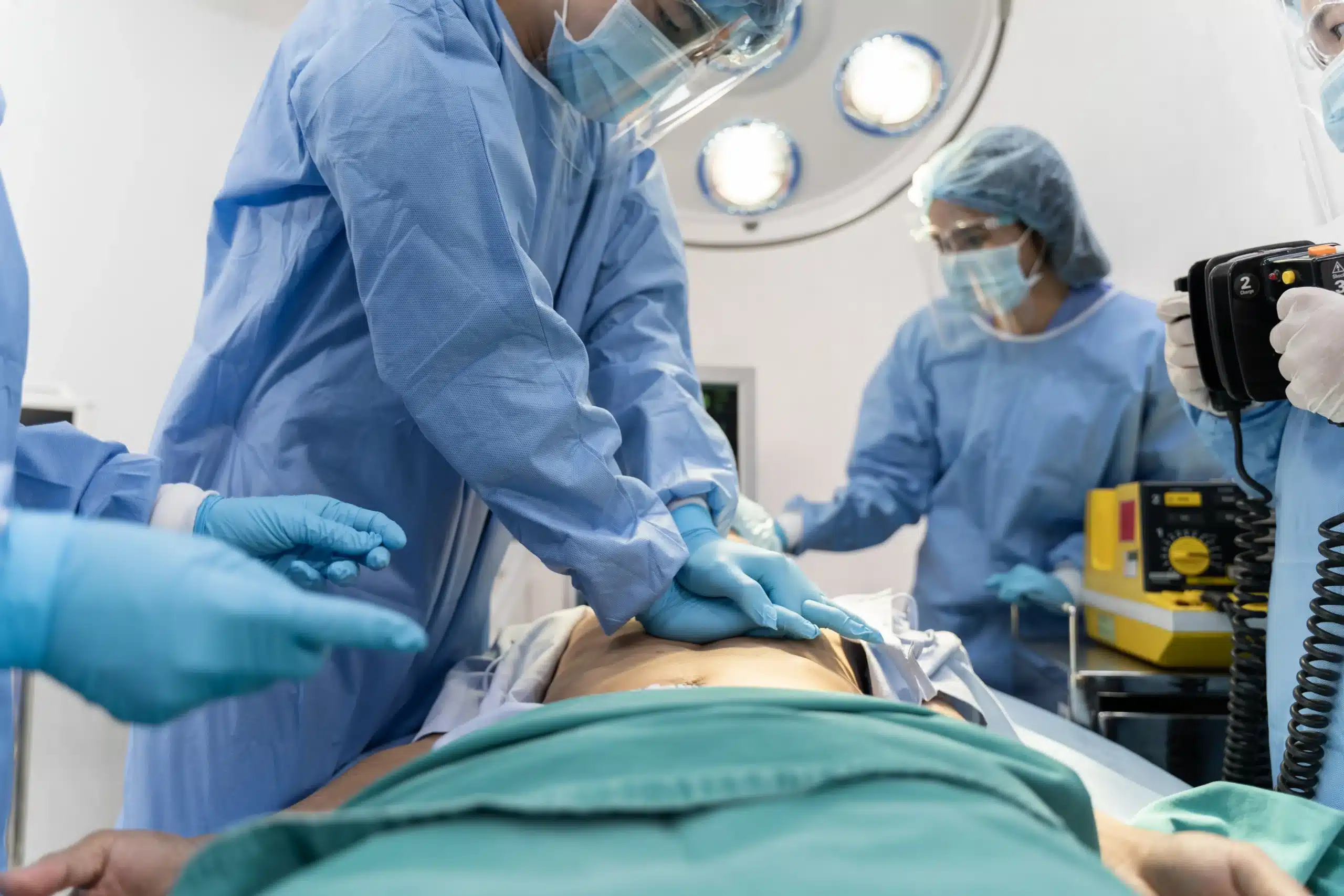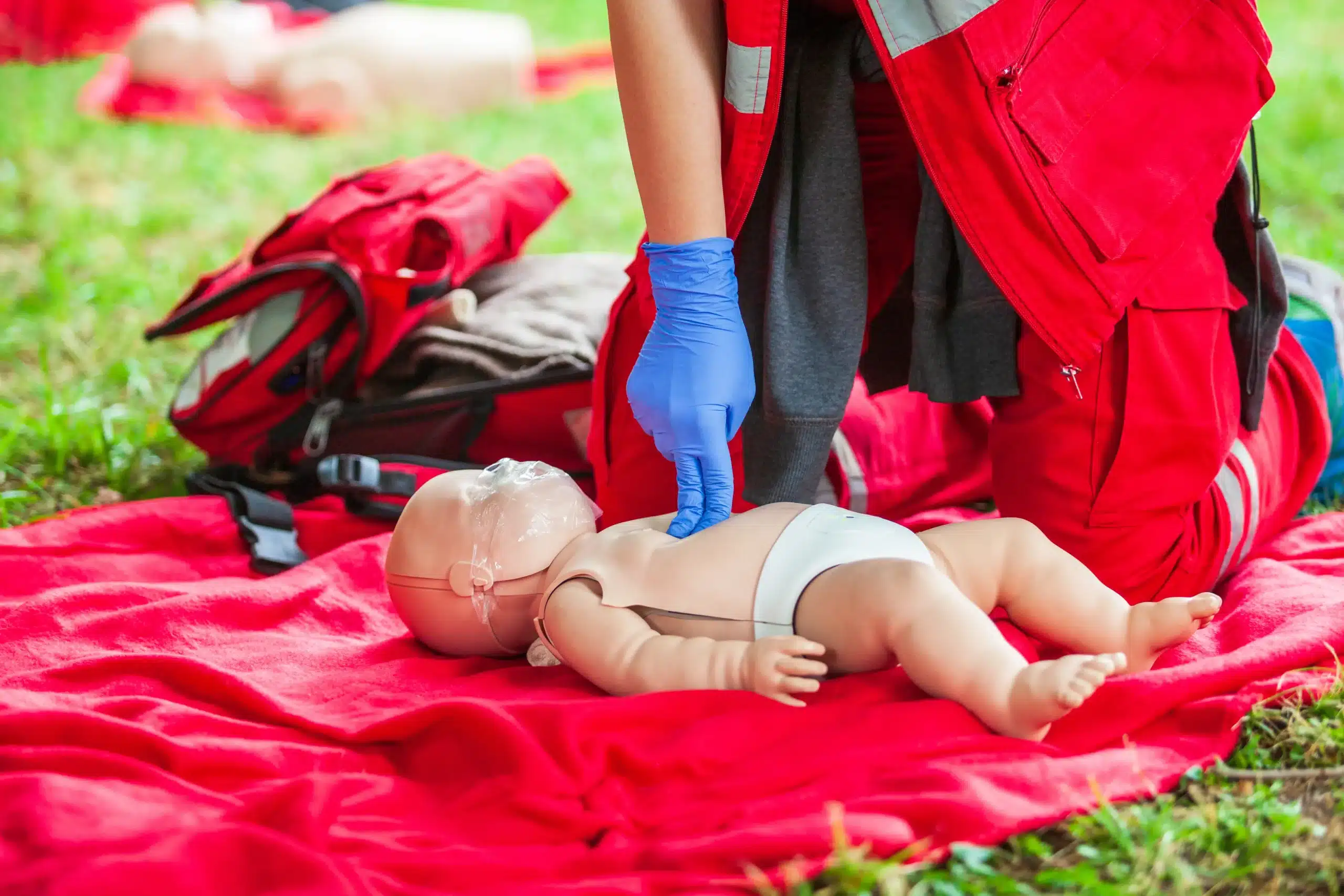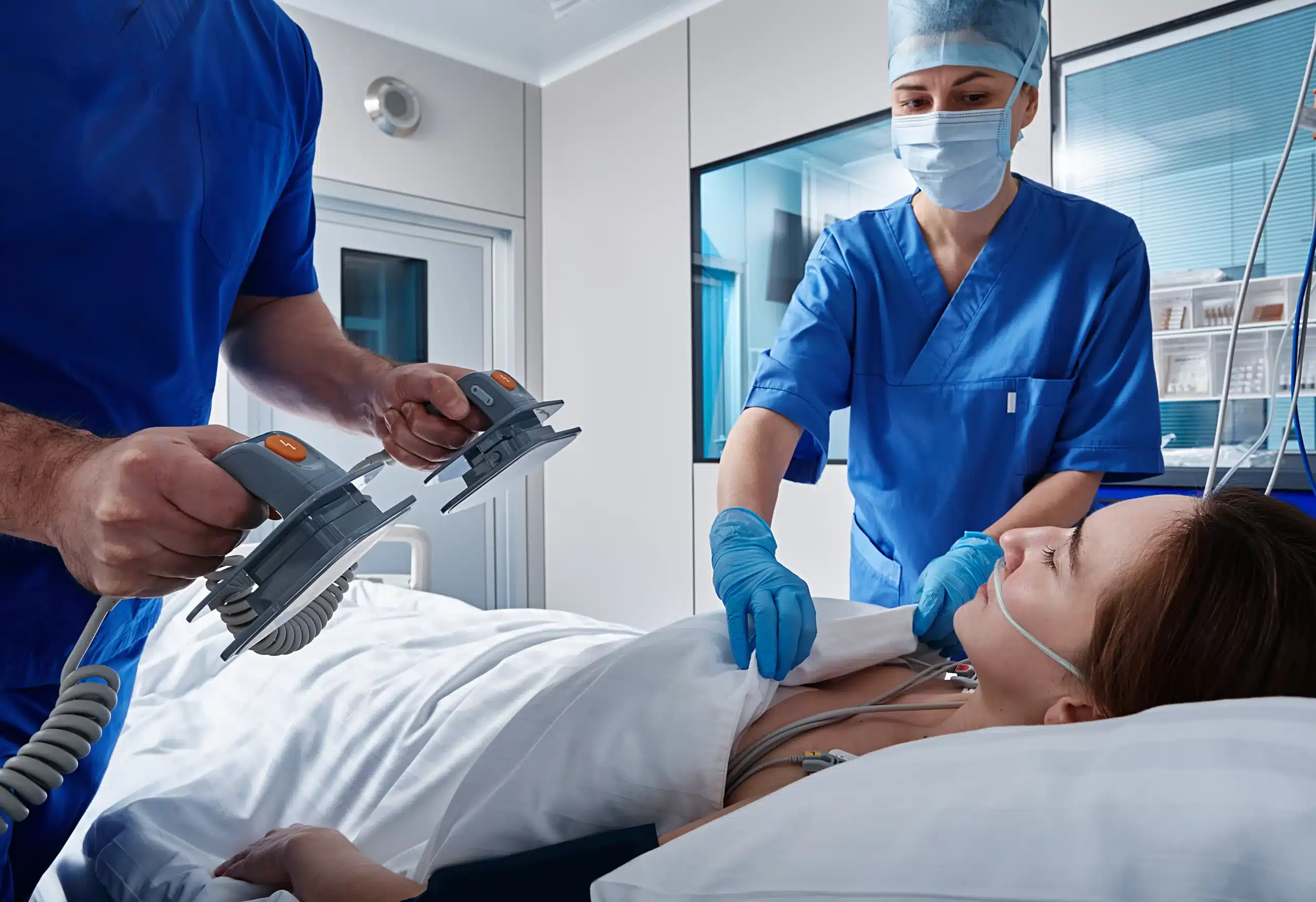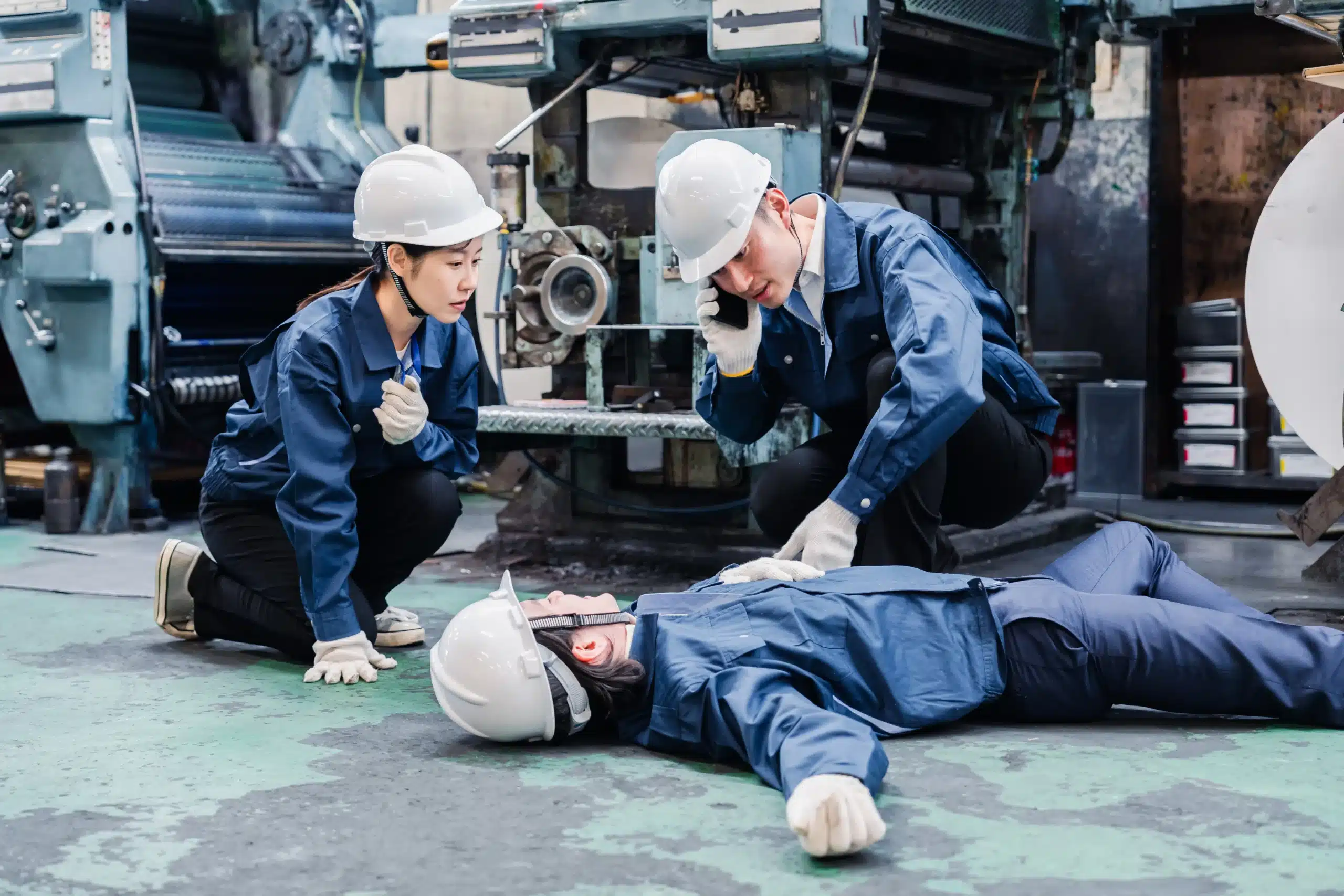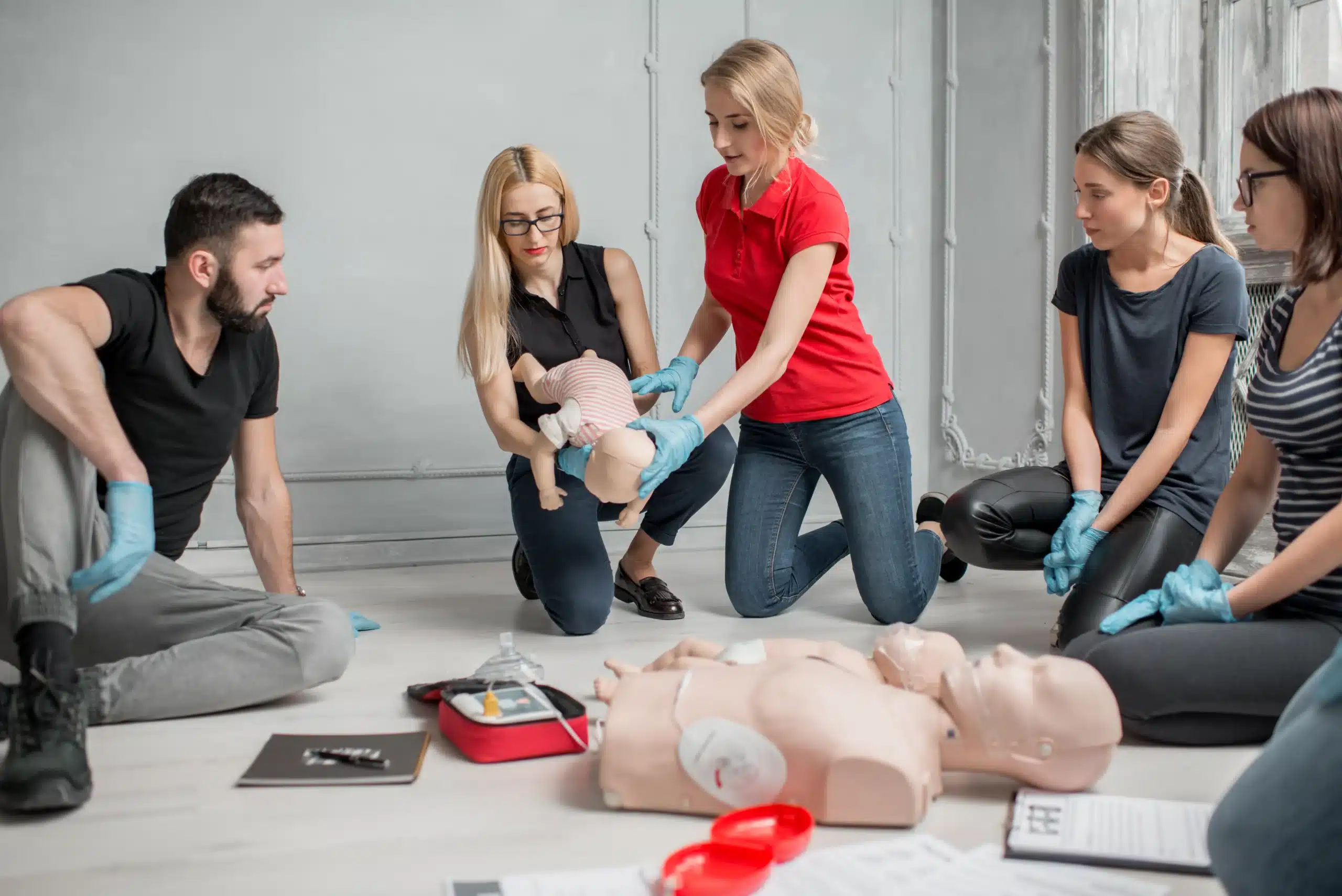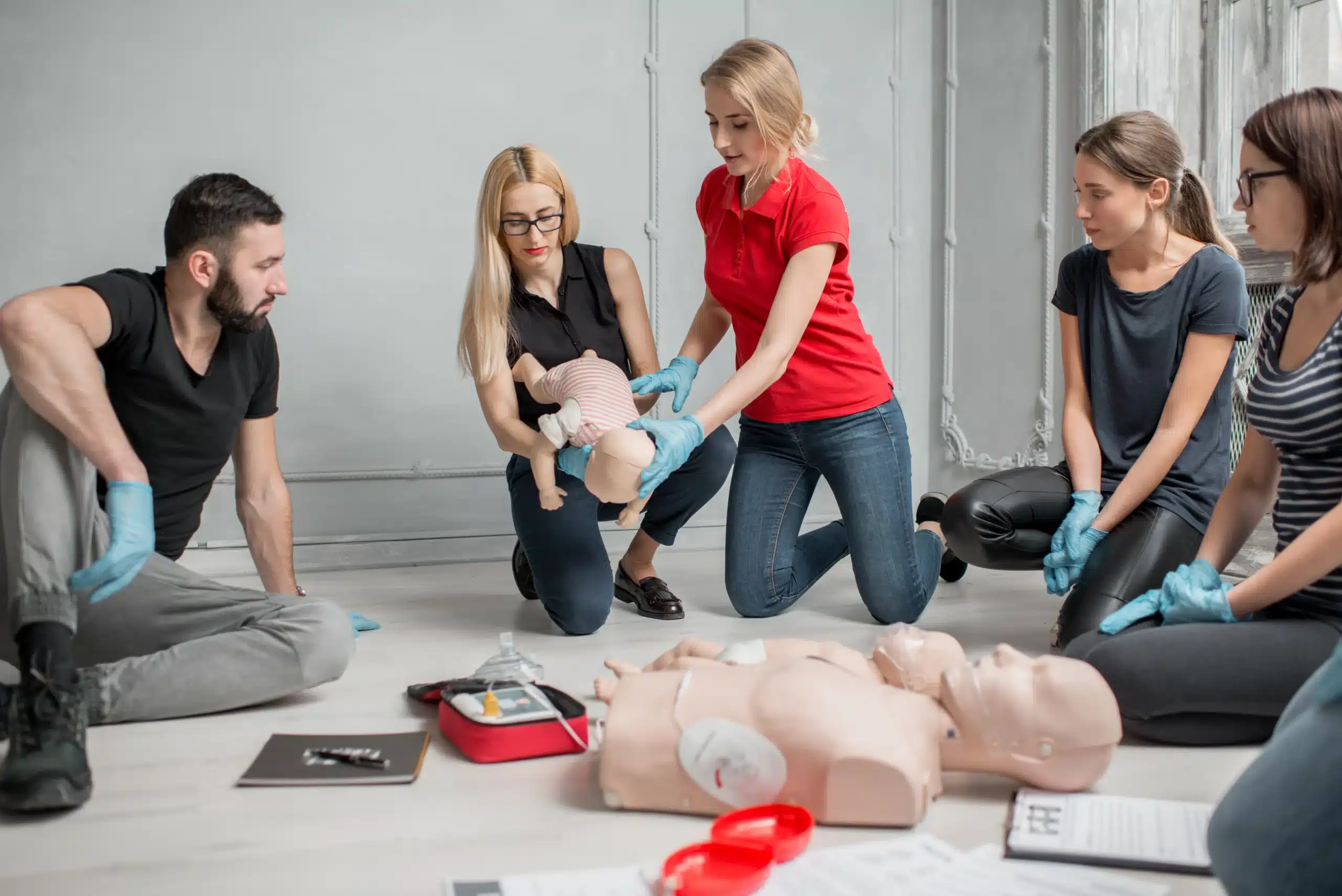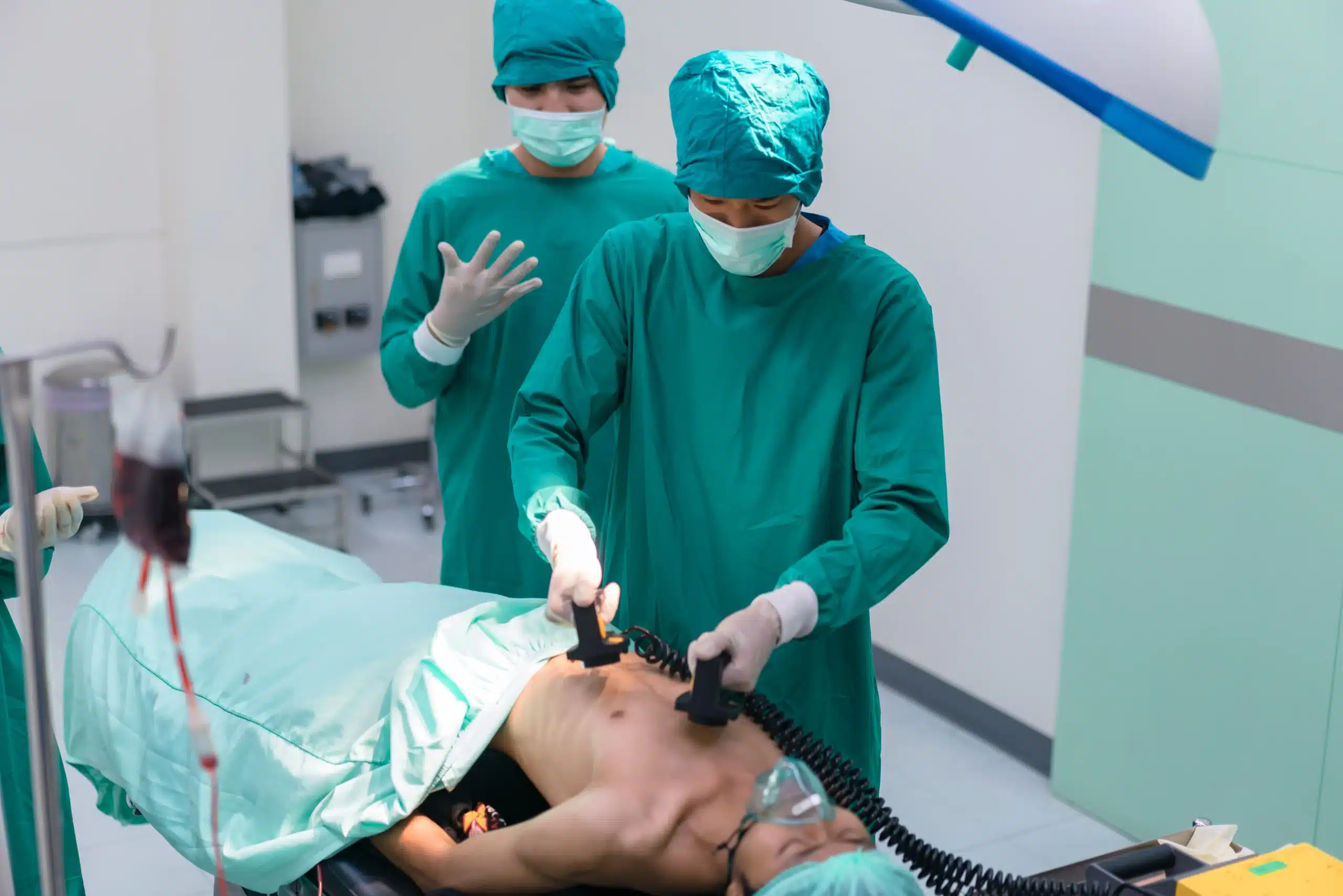Emergencies can happen anytime, anywhere. Being equipped with the skills to respond effectively is invaluable. This guide explores the importance of basic life support (BLS) training in Milpitas, offering a practical roadmap for those seeking certification. We’ll delve into what BLS entails, who benefits from it, and how it strengthens community preparedness. Discover the various BLS course options available in Milpitas, including in-person and blended learning formats. We’ll also address common misconceptions about BLS training and highlight the advantages of choosing a certified American Heart Association training center. Whether you’re a healthcare provider or a concerned community member, this guide will provide you with the essential information you need to get started with basic life support in Milpitas.
Key Takeaways
- BLS skills are essential for everyone: Equipping yourself with life-saving techniques like CPR, AED use, and airway management empowers you to respond confidently in emergencies, regardless of your background.
- Choose a BLS course that fits your lifestyle: Consider factors like provider reputation, in-person vs. blended learning options, and scheduling flexibility to find a course that works for you. Prioritize AHA-certified training for a nationally recognized credential.
- BLS certification has lasting benefits: From increased workplace safety and community preparedness to personal confidence, BLS training provides valuable skills that can make a real difference. Maintain your skills by renewing your certification every two years.
What is Basic Life Support (BLS) in Milpitas?
What is BLS and Why is it Important?
Basic Life Support (BLS) is a level of medical care used in life-threatening emergencies until someone with more advanced training arrives. Think of it as the first line of defense in a crisis. BLS focuses on providing immediate support for vital functions like breathing and circulation. This often involves techniques like CPR (cardiopulmonary resuscitation), using an AED (automated external defibrillator), and relieving choking. These skills can truly be lifesaving. BLS certification training covers essential procedures for managing airways and providing basic life support. Quick, effective action can stabilize a person and significantly improve their chances of survival. Whether it’s a heart attack, near-drowning, or another sudden medical event, having someone nearby trained in BLS can dramatically change the outcome.
Why is BLS so important? Because those first few minutes of an emergency are critical. It empowers individuals to respond confidently and effectively in high-pressure situations. Knowing how to perform CPR, use an AED, and clear an obstructed airway can make all the difference.
Who Needs BLS Certification?
While often associated with healthcare providers like doctors and nurses, BLS certification is valuable for a much wider range of people. Anyone who might find themselves in a position to help during a medical emergency can benefit from this training. This includes teachers, coaches, lifeguards, childcare providers, and even parents. Essentially, BLS certification is for anyone who wants to be prepared and equipped to help in a crisis. It’s a powerful skill set that can bring peace of mind knowing you can step up when needed. It’s not just for medical professionals; it’s a valuable asset for anyone. Having trained individuals in various settings increases the likelihood of someone being able to provide immediate assistance during a medical emergency.
Common Misconceptions About BLS Training
There are a few common misconceptions about BLS training that often prevent people from pursuing it. One is that it’s only for medical professionals. As we’ve discussed, that’s simply not true. Another myth is that BLS training takes a huge time commitment. While it does require dedicated study and practice, many courses are designed to fit busy schedules. Finally, some believe BLS certification is a one-time thing. In reality, BLS certifications typically expire after two years, requiring renewal to stay up-to-date with the latest guidelines and techniques. It’s important to keep your skills fresh to provide the most effective care possible. Regularly renewing your certification ensures you’re always prepared to respond effectively in an emergency.
Top BLS Training Providers in Milpitas
Finding the right BLS training provider is key to learning effectively and earning a recognized certification. Here are some top providers in and around Milpitas:
Milpitas CPR Classes
Milpitas CPR Classes offers a variety of American Heart Association (AHA) BLS certification courses. These programs equip participants with the essential skills to respond to emergencies. You’ll receive an AHA BLS certification, valid for two years, after successfully completing their BLS course.
Safety Training Seminars
Safety Training Seminars, a woman-owned AHA Training Center, provides BLS training along with other courses like ACLS, PALS, CPR, and First Aid. Offering classes seven days a week makes scheduling convenient. Learn more about their course schedule.
American Heart Association
The American Heart Association (AHA) sets the standard for BLS training. AHA courses teach essential CPR skills, including AED use. These certifications are widely recognized and valid for two years. Find CPR classes in your area.
Bay Area CPR
Bay Area CPR offers comprehensive BLS training in Milpitas for both healthcare professionals and the general community. They focus on building confidence and ensuring participants are prepared for emergency situations. Explore their website for information on their BLS, ACLS, PALS, and CPR classes.
BATA Education
BATA Education provides BLS training with a focus on practical skills and the knowledge necessary for effective emergency response. Their courses are designed for healthcare providers and community members alike. Learn more about their BLS CPR Provider class.
BLS Course Details: What to Expect
Thinking about taking a BLS course? Here’s a rundown of what you can expect.
Course Duration and Formats
BLS classes are roughly 3.5 hours, covering all the essential life-saving techniques. We offer a few different formats to fit your schedule.
In-Person vs. Blended Learning
Choose between traditional in-person classes at our Milpitas location or a blended learning option. Blended learning combines online coursework (HeartCode BLS) with a shorter, 1-hour in-person skills session. This provides flexibility for those with busy schedules. Learn more about our BLS course options.
Costs and Discounts
Our BLS course is $70. We also offer a 20% discount for EMT students – give us a call for a coupon code before registering.
Skills You’ll Learn
This course equips you with the skills to confidently respond to emergencies. You’ll learn how to perform CPR on adults, children, and infants, operate an AED (Automated External Defibrillator), and deliver rescue breaths.
Get Certified: The Process
After successfully completing the course, you’ll receive your official American Heart Association BLS certification card, valid for two years. This nationally recognized certification is often a requirement for healthcare providers and demonstrates your proficiency in basic life support. Register for a BLS class today.
Benefits of BLS Certification
Getting your BLS certification is more than just checking a box; it’s about equipping yourself with skills that can make a real difference. Whether you’re a healthcare professional or someone who wants to be prepared for anything, BLS training offers distinct advantages.
BLS vs. Other CPR Certifications
Basic Life Support (BLS) certification goes beyond standard CPR training. While CPR focuses on chest compressions and rescue breaths, BLS incorporates essential skills like using an automated external defibrillator (AED), basic airway management, and assisting someone who is choking. This broader skillset makes BLS invaluable in various emergencies. It’s not just for healthcare providers—anyone can benefit from this comprehensive BLS training.
Advanced Skills for Healthcare Professionals
For healthcare providers, BLS certification is a cornerstone of patient care. It equips professionals with the skills to manage life-threatening situations effectively, ultimately improving patient outcomes. BLS covers advanced techniques and emphasizes teamwork during emergencies. It’s not a one-time requirement; maintaining your BLS certification demonstrates a commitment to providing high-quality care.
Career and Personal Advantages
A BLS certification can open doors in your career, especially in healthcare and related fields. It’s a sought-after credential that shows employers your dedication to patient safety and your ability to handle critical situations. But the benefits extend beyond the professional realm. Knowing BLS can give you the confidence to respond effectively in emergencies, whether at home, in public, or at work. It empowers you to help loved ones and strangers alike. Consider getting your BLS Certification today.
When You’ll Need BLS
You never know when you might need to use your BLS skills. From a sudden cardiac arrest at a family gathering to a choking incident at a restaurant, emergencies can happen anywhere. AHA BLS CPR classes prepare you for these unpredictable moments, giving you the tools to act quickly and confidently. Your certification, valid for two years, signifies your readiness to provide crucial support when it matters most.
Choose the Right BLS Course in Milpitas
Finding the right BLS course in Milpitas can feel overwhelming with so many options. This section breaks down key factors to consider, sets you up for course success, and helps you through the registration process.
Choosing a Provider: What to Consider
First, select a training provider aligned with your needs and learning style. Look for a provider offering a comprehensive curriculum covering essential skills and knowledge for high-quality CPR. Safety Training Seminars, a woman-owned AHA Training Center, offers American Heart Association BLS courses in Milpitas. This ensures you’re learning evidence-based practices and receiving a recognized certification. Consider factors like class size, instructor experience, and overall course structure. Do you prefer a smaller, more intimate setting, or a larger class? Reading reviews from past students can offer valuable insights.
Tips for BLS Course Success
Preparing for your BLS course can significantly impact your learning. Watching pre-course videos increases your chances of passing the skills test. Many providers offer these resources, so take advantage of them. Reviewing the course materials beforehand can also give you a head start. During the course itself, active participation is key. Ask questions, engage in discussions, and practice the skills diligently. Regular practice and refresher training are essential for maintaining proficiency, so consider how you’ll continue practicing after the course.
Register for a BLS Course
Once you’ve chosen a provider and prepared for the course, registration is usually straightforward. Many providers have online registration systems. You’ll likely find classes offered daily, sometimes from 8 am to 10 pm, accommodating various schedules. Upon successful completion of an AHA BLS course in Milpitas, you’ll receive an American Heart Association certification card, valid for two years. Keep this timeframe in mind and mark your calendar for renewal to maintain your certification.
BLS: Community Impact and Workplace Safety
BLS and Community Preparedness
BLS classes in Milpitas equip people with the skills to handle emergencies. These courses cover essential life-saving techniques, creating a network of trained individuals ready to respond effectively. This community preparedness strengthens our collective ability to manage crises and provide immediate assistance when needed. Taking a BLS CPR class is a direct investment in the well-being of our community. The skills you gain empower you to make a real difference and potentially save lives. You’ll receive an American Heart Association certification, valid for two years, demonstrating your commitment to community safety.
BLS in Different Professions
BLS training isn’t just for healthcare professionals; it’s a valuable skill across various professions. From teachers and childcare providers to construction workers and office staff, BLS training provides essential knowledge applicable in diverse settings. Understanding how to use an automated external defibrillator (AED), managing airways, and assisting someone who is choking are crucial skills that can save lives, regardless of your profession. These skills empower individuals to respond confidently during emergencies, creating safer environments for everyone. Learn more about the importance of BLS training.
Cultural Considerations in BLS Training
Accessibility is key to effective BLS training. Safety Training Seminars, a woman-owned AHA Training Center, offers courses seven days a week in Milpitas, accommodating diverse schedules and needs. This flexible approach ensures that BLS training is within reach for everyone, regardless of their work commitments or cultural background. By offering convenient scheduling options, Safety Training Seminars fosters a more inclusive approach to community safety.
Renew Your BLS Certification
BLS certification isn’t a one-time achievement; it requires renewal every two years. This ensures that certified individuals stay up-to-date with the latest guidelines and techniques in life-saving procedures. Renewing your BLS certification demonstrates a continued commitment to providing high-quality care and maintaining the skills necessary to respond effectively in emergencies. Regular renewal reinforces the importance of ongoing training and ensures that certified individuals remain prepared and confident in their abilities.
Related Articles
- BLS for Healthcare Providers in Santa Clara: A Guide – Milpitas CPR Classes
- BLS CPR Classes in Milpitas, CA – Milpitas CPR Classes
- Online CPR Classes in Milpitas: Your Complete Guide – Milpitas CPR Classes
- CPR Certification in Milpitas: Your Comprehensive Guide – Milpitas CPR Classes
- BLS Certification in Santa Clara: Your Full Guide – Milpitas CPR Classes
Frequently Asked Questions
Is BLS certification only for healthcare professionals? Not at all! While it’s definitely essential for healthcare providers, BLS certification is a valuable skill for anyone. Teachers, coaches, parents, and anyone who wants to be prepared for an emergency can benefit. It empowers you to help in a crisis, no matter your profession.
What’s the difference between BLS and CPR certification? BLS builds upon basic CPR. It includes CPR techniques but also covers using an AED, managing airways, and relieving choking. It’s a more comprehensive approach to emergency care.
How long does a BLS course take, and what are my learning options? BLS courses are typically around 3.5 hours. You can choose in-person classes or blended learning, which combines online coursework with a shorter in-person skills session. This flexibility makes it easier to fit training into your schedule.
How much does BLS certification cost, and how do I register? Costs vary, so check with your chosen provider. Many providers offer online registration, making it easy to sign up for a class that fits your schedule. Look for providers like Milpitas CPR Classes who offer discounts.
How long is BLS certification valid, and how do I renew it? BLS certification is typically valid for two years. You’ll need to renew it to stay current with the latest guidelines. Check with your certifying organization for renewal options and keep track of your expiration date.
